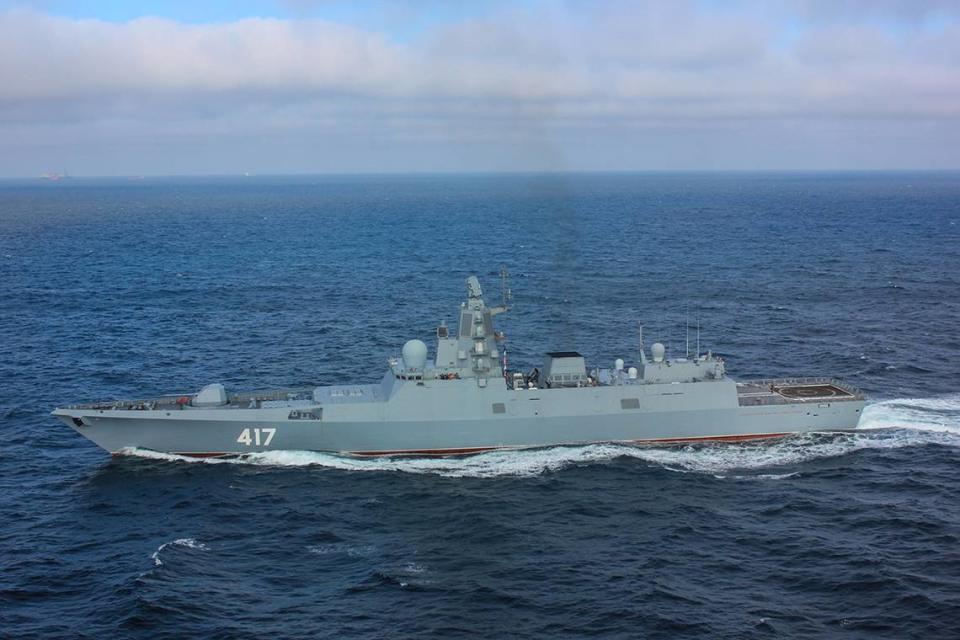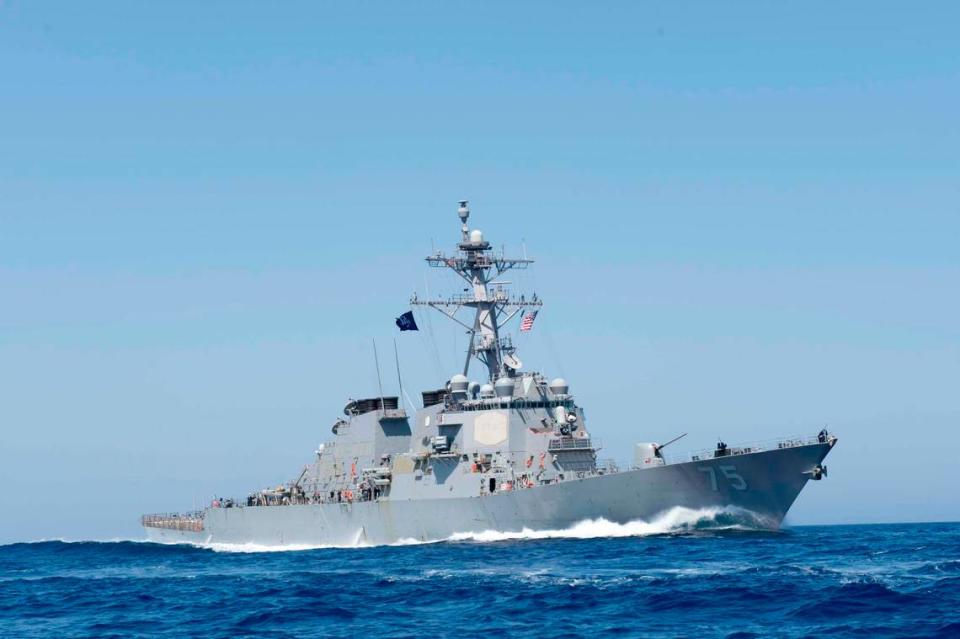Capable of launching hypersonic missiles, Russian ships near Florida can pack a wallop
Two of the Russian ships that sailed this week less than 30 miles from South Florida’s coast are among the first acquisitions in Moscow’s latest efforts to modernize its decaying fleet and are equipped not only with stealth features but also are capable of carrying the difficult to intercept hypersonic missiles.
Two of the four vessels in the naval group — the oil tanker Pashin and the salvage tug Nikolai Chiker — consist of support ships, capable of carrying fuel and of tugging any of the other vessels if necessary. But the two others are formidable warships: The missile frigate Admiral Gorshkov and the nuclear submarine Kazan can pack a wallop in terms of armament and are part of Russia’s attempts to catch up with the world’s modern navies.
The Admiral Gorshkov
First commissioned in 2018, the Admiral Gorshkov is the first of its class, designed for multiple roles that includes serving as a platform for long-range strikes, conducting escort missions and participating in submarine warfare.

The ship is 440 feet long — a big shorter than the largest U.S. destroyers — can travel at a speed of 29.5 knots, or 34 miles per hour, and has a range of about 5,500 miles. It carries modern targeting gear, electronic warfare equipment and sports a helicopter landing pad. It can carry up to 210 officers and crew.
The frigate can carry some of the most modern armaments in Russia’s arsenal.
In early 2020, the Admiral Gorshkov test-launched the 3M22 Zircon hypersonic anti-ship cruise missile from the Barents Sea, the first time the missile had been launched from a ship. The missile, which has been used during Russia’s Ukraine invasion, has a reported maximum speed of Mach 9, or just under 7,000 per hour.
The frigate can carry up to 16 Zircons. It can also deploy up to 32 medium-range surface-to-air missiles, torpedo tubes and 30 mm rotary cannons and machine guns.
The Kazan
The Kazan, a nuclear-powered cruise-missile submarine, is also an important show piece of the Russian navy. It is also capable of carrying Zircon hypersonic missiles, but can also fire other types of anti-ship and anti-submarine or land-attack missiles.

In addition, the 457-feet long sub has 10 torpedo tubes designed for the Futlyar “heavyweight” torpedo, which carry more than 660 pounds of explosives each.
The Kazan is the second Yasen-class sub launched by Russia and the growing deployment of this type of vessel has not gone unnoticed in Washington.
Last year, U.S. Air Force Gen Glen Van Herck, at the time the head of NORTHCOM, told Congress that the Yasen class is one of Moscow’s best subs, and said the Pentagon is concerned that the vessels could soon present a 24-hour threat to both U.S. coasts.
On the U.S. side
The Russian ships are being monitored by four powerful American counterparts: three Arleigh Burke-class destroyers from the U.S. Navy and a Legend-class cutter from the U.S. Coast Guard.
The destroyers –the USS Truxtun, USS Donald Cook and USS Delbert D. Black — can carry dozens of different missile types to attack air, sea and land targets. These include surface-to-air missiles, anti-ballistic missile and Tomahawk cruise missiles.

In addition, the Arleigh Burke-class destroyers usually have at least two torpedo tubes and a helipad for the Sikorsky SH-60 Seahawk. Their armament also include a number of light-weight cannons and heavy machine guns.
The Coast Guard cutter is not as powerfully armed as its Navy counterparts, with its weapons consisting of light cannons and machine guns, but has a landing platform for different types of helicopters.

